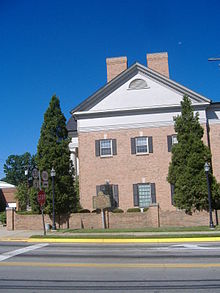
Freemasonry or Masonry refers to fraternal organisations that trace their origins to the local guilds of stonemasons that, from the end of the 13th century, regulated the qualifications of stonemasons and their interaction with authorities and clients. Modern Freemasonry broadly consists of two main recognition groups:

John Hunt Morgan was an American soldier who served as a Confederate general in the American Civil War of 1861–1865.
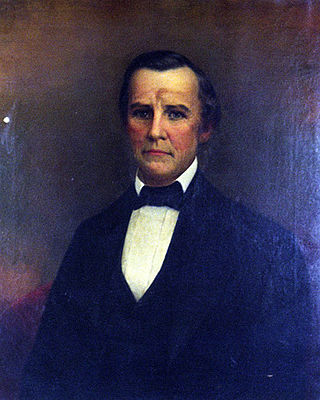
Archibald Yell was an American politician and lawyer who served as the U.S. representative from Arkansas from 1836 to 1839, and 1845 to 1846. He was the second governor of Arkansas, serving from 1840 to 1844. Yell was killed in action at the Battle of Buena Vista on February 23, 1847.
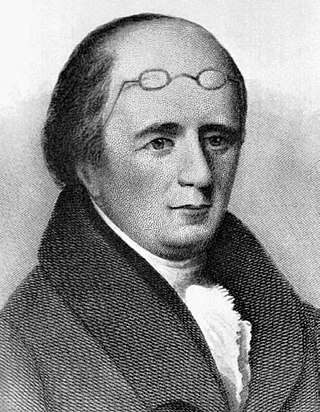
William Morgan was a resident of Batavia, New York, whose disappearance and presumed murder in 1826 ignited a powerful movement against the Freemasons, a fraternal society that had become influential in the United States. After Morgan announced his intention to publish a book exposing Freemasonry's secrets, he was arrested on trumped-up charges. He disappeared soon after and was believed to have been kidnapped and killed by Masons from western New York.
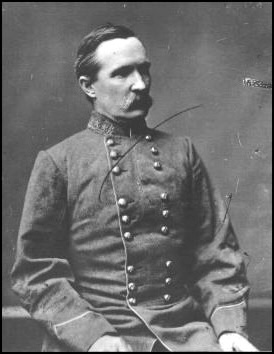
Henry Heth was a career United States Army officer who became a Confederate general in the American Civil War.

Morgan's Raid was a diversionary incursion by Confederate cavalry into the Union states of Indiana, Kentucky, Ohio and West Virginia during the American Civil War. The raid took place from June 11 to July 26, 1863, and is named for the commander of the Confederate troops, Brigadier General John Hunt Morgan. Although it caused temporary alarm in the North, the raid was ultimately classed as a failure.

The Grand Lodge of Texas, Ancient Free and Accepted Masons is the largest of several governing bodies of Freemasonry in the State of Texas, being solely of the Ancients' tradition and descending from the Ancient Grand Lodge of England, founded on 17 June 1751 at the Turk's Head Tavern, Greek Street, Soho, London. According to historian James D. Carter, the "Grand Lodge of the Republic of Texas, A.F. & A.M." was founded on 16 April 1838. However, its first Grand Master and other grand officers were installed by Sam Houston on 11 May 1838. The Grand Lodge of Texas is one of the largest in the world, reporting 69,099 members in 2019. The current Grand Lodge of Texas facilities were made possible by the fundraising efforts of Waco Masonic Lodge No. 92.

Jefferson General Hospital was the third-largest hospital during the American Civil War, located at Port Fulton, Indiana and was active between February 21, 1864 and December 1866. The land was owned by U.S. Senator from Indiana Jesse D. Bright. Bright was sympathetic to the Confederates, and was expelled from his position as Senator in 1862. Union authorities took the property without compensation, similar to what happened at Arlington National Cemetery.
Simmons College of Kentucky is a private historically black college in Louisville, Kentucky. Founded in 1879, it is the nation's 107th HBCU and is accredited by the Association for Biblical Higher Education.

Thomas Henry Hines was a Confederate cavalryman who was known for his spying activities during the last two years of the American Civil War. A native of Butler County, Kentucky, he initially worked as a grammar instructor, mainly at the Masonic University of La Grange, Kentucky. During the first year of the war, he served as a field officer, initiating several raids. He was an important assistant to John Hunt Morgan, doing a preparatory raid in advance of Morgan's Raid through the states of Indiana and Ohio, and after being captured with Morgan, organized their escape from the Ohio Penitentiary. He was later involved in espionage and tried to stir up insurrections against the Federal government in selected Northern locales.

William E. Woodruff was an American soldier who served as colonel of the 25th Illinois Volunteer Infantry Regiment during the American Civil War. Woodruff was given temporary brigade and division command in the Army of the Cumberland, but not promoted to brigadier general. He resigned in January 1863 out of frustration for his lack of advancement and was replaced by Brig. Gen. Thomas T. Crittenden.

Rob Morris was a prominent American poet and Freemason. He also created the first ritual for what was to become the Order of the Eastern Star.

The Masonic Home and School of Texas was a home for widows and orphans in what is now Fort Worth, Texas from 1889 to 2005. The first superintendent was Dr. Frank Rainey of Austin, Texas. Starting in 1913, it had its own school system, the Masonic Home Independent School District. Orphan Blake R. Van Leer was the only boy in 1909, went on to become president of Georgia Tech and civil rights advocate.
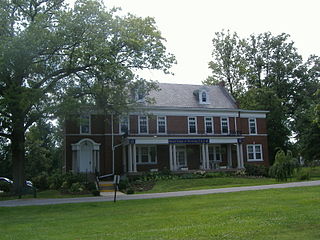
The Grand Lodge of Kentucky is one of two state organizations that supervise Masonic lodges in the state of Kentucky. It was established in 1800.

The Masonic Widows and Orphans Home, located in Louisville, Kentucky, is a historic building on the National Register of Historic Places. It was built by the Grand Lodge of Kentucky to support the widows and orphans of Master Masons, but now is open to all senior citizens.

The Grand Lodge of Free & Accepted Masons of Indiana is one of two statewide organizations that oversee Masonic lodges in the state of Indiana. It was established on January 13, 1818. The Grand Lodge of Indiana's offices and archives are located in the Indianapolis Masonic Temple.
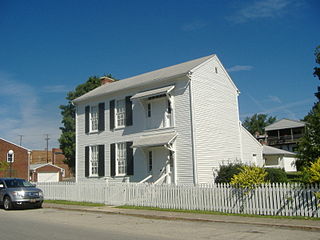
The Rob Morris Home, located in the east end of the Central La Grange Historic District of La Grange, Kentucky on 102 Washington Street, is the historic home of Rob Morris, the second and last poet laureate of Freemasonry and the founder of the Order of the Eastern Star.

William Venoid Banks was an American lawyer and minister who is the first President and General Manager of WGPR-FM and WGPR-TV.
